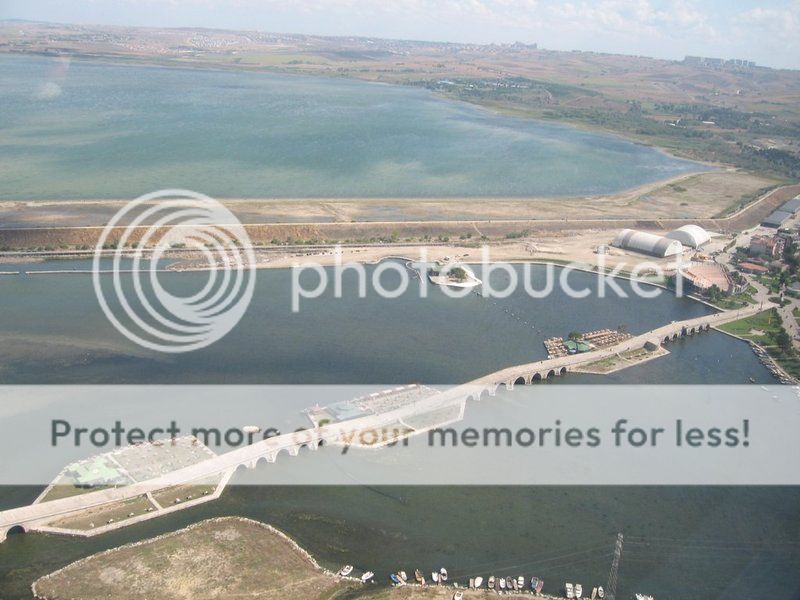
PHOTOGRAPHS ALBUM
This bridge is on the Büyükçekmece Lake, Kültürpark about 40 km from Istanbul, at the juncture of Büyükçekmece lake and Marmara Sea on the Istanbul-Edirne road. The bridge connects Büyükçekmece to the Mimarsinan Township.
Spanning 636 meters over the natural channel that connects the Büyükçekmece Lake with the Sea of Marmara to the south, the bridge was built beginning 1563 by Süleyman I (Kanuni Sultan Süleyman or Süleyman the Magnificent, 1520-1566) during his Szigetvar campaign. Upon his death, Selim II ordered the completion of the bridge and it was subsequently used during the return of the Army from the Expedition.
Sinan describes this bridge as one of his most favorite works. Perhaps this explains why the Büyükçekmece Bridge is the only one of his works that carries Sinan’s personal signature. Unfortunately, the original signature was stolen and has been substituted by a replica.
A stone bridge built by the Romans and restored by Mehmed II allowed passage further north prior to the construction of the current bridge by head-architect Sinan. Sinan also designed a small complex on the eastern bank of the channel for Sokullu Mehmed Paşa that consists of a fountain (çeşme), caravanserai (kervansaray) and a small mosque (mescit) known as Sokullu Mehmed Paşa Mescidi or Köprübaşı (foot of the bridge) Mosque. The bridge and the complex were completed a year into the rule of Sultan Süleyman's successor, Sultan Selim II (1566-1574).
The structure also known as the Büyükçekmece Bridge consists of four sections that individually ascend and descend carried on arches, resting on artificial islands placed in between. From east to west, the first two sections have seven arches each, followed by a five and a nine-arched section, with four-centered arches varying from 4.5 to 11.9 meters in width.
After choosing firm ground closer to the seabed to span the channel, Sinan laid hexagonal artificial islands with thick retaining walls for during low tide. Lead was poured into caissons dug into the seabed prior to filling the foundations to create a stronger foundation.
The bridge carries a two-lane cobblestone road that is protected with shallow stone barriers on either side. The first section at the eastern end has two stone balconies at its apex that project over the river carried on stone braces. The forth section, to the west, has two inscription panels facing each other on either side of the road. Composed in Arabic, the southern panel offers praise to Süleyman I and Selim II and gives the date of construction.
Mimar Sinan, who is referred to as Yusuf bin Abdullah in this panel, also has a signature to its side displaying this alternative name that is only mentioned in an early version of his monograph, Tezkiret-ül Ebniye. The northern panel is in Turkish and announces the completion of the bridge by Sultan Selim II.
A highway bridge was built to the south of the Sultan Süleyman Bridge in 1950 to accommodate intercity traffic. The historic bridge was restored in 1970 by the Turkish Highways Administration and is closed to traffic.
LOCATION SATELLITE MAP
These scripts and photographs are registered under © Copyright 2017, respected writers and photographers from the internet. All Rights Reserved.
No comments:
Post a Comment